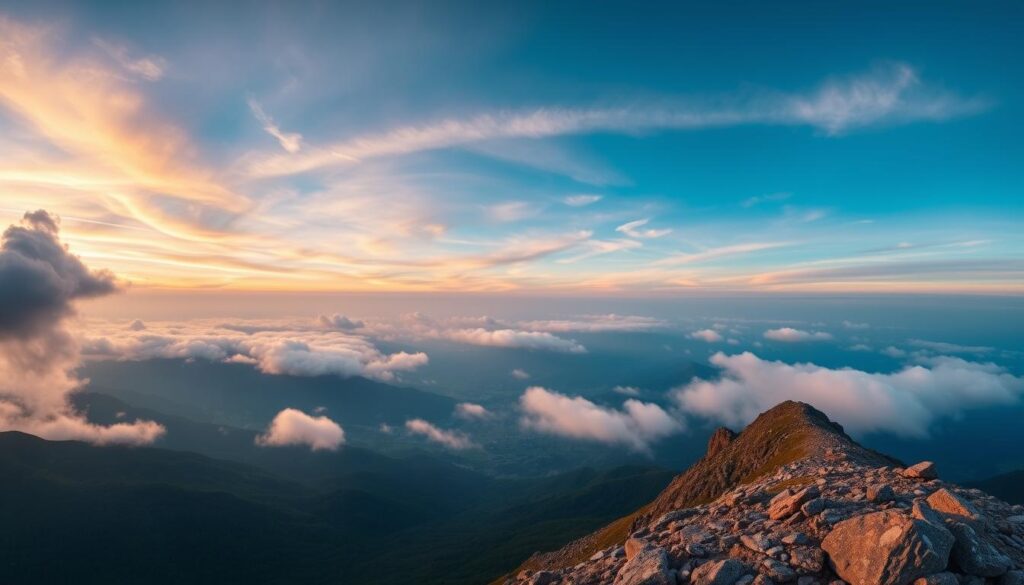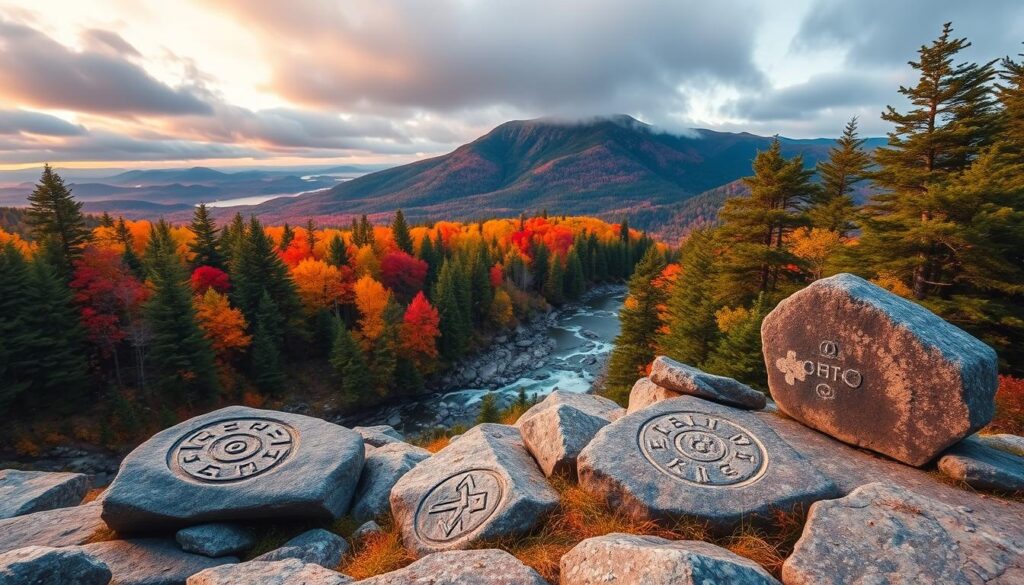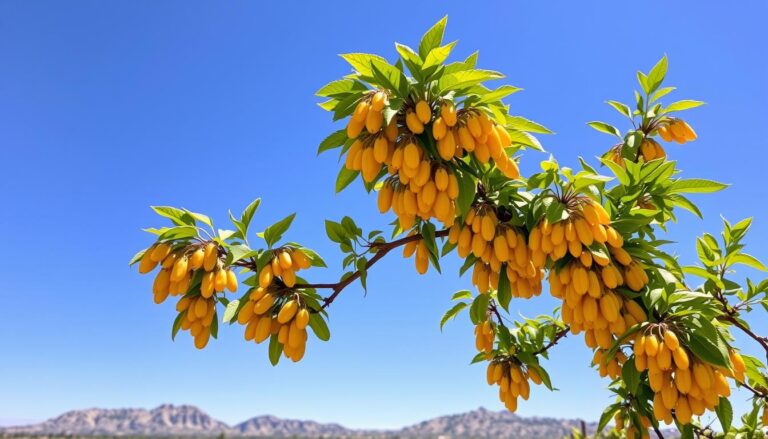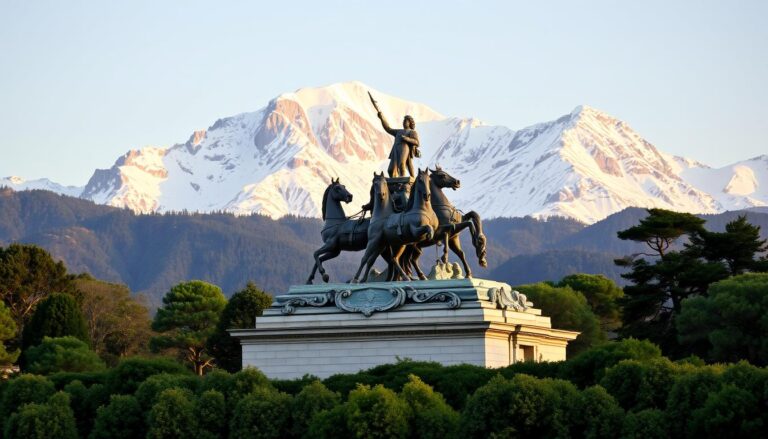
History of Stewart Peak Warner NH
Introduction
Warner, New Hampshire, is home to Stewart Peak. It’s a natural wonder that has amazed people for centuries. The peak offers beautiful views of the Warner River Valley.
Warner is known for its New England charm. It has mountains, forests, and rivers. Stewart Peak is at the heart of this beauty, attracting many visitors.
The history of Stewart Peak is tied to Warner’s past. It started in the 18th century. The peak was important during the Revolutionary War and the logging boom.
Now, Stewart Peak is a favorite spot for hikers. It has great views of the Warner River Valley. The peak is also important for conservation, keeping its beauty and history safe.
Geographic Overview of Stewart Peak
Stewart Peak is in Warner, New Hampshire. It’s in the White Mountain National Forest. The summit gives amazing views of valleys and mountains.
Location and Accessibility
Stewart Peak is easy to get to by car. It’s a favorite spot for hikers. The Mount Kearsarge State Forest Park nearby helps keep the area beautiful.
Natural Features
Stewart Peak has rugged terrain and old forests. It’s home to many animals. The views from the top are incredible, with mountains all around.
| Natural Feature | Description |
|---|---|
| Elevation | 2,926 feet (892 meters) |
| Terrain | Rugged, with steep slopes and rocky outcroppings |
| Vegetation | Lush forests, including a mix of deciduous and evergreen trees |
| Wildlife | Diverse array of birds, mammals, and other fauna |

Early History and Indigenous Inhabitants
Before Europeans came, the area around Stewart Peak in Warner, New Hampshire, was home to the Abenaki people. The Abenaki loved the land and used its resources to live. Stewart Peak might have been special to them, with trails connecting their lands for trade and talks.
The Abenaki knew the land well and lived in harmony with it. They took care of the environment, keeping it balanced. Their way of life is still part of Warner’s story, seen in its culture and nature.
When Europeans arrived in the 18th century, they met the Abenaki. The Warner grant’s owners wanted settlers, but it took time. By 1749, only four houses were built in Davisville.
But more people came, and by 1770, almost 55 families lived in Warner. The settlers had to overcome many challenges, like finding food and dealing with the cold.
They ate simple foods like bean porridge and fish. Despite the hard times, they worked hard. They made Warner a town in 1774, starting its growth.
The stories of the Abenaki and early settlers in Warner are complex. The native american legacy in warner and the early settlers’ tales are key parts of the area’s history.
European Settlement and Warner’s Founding
In the early 18th century, settlers from Massachusetts got the land around Warner. This included the famous Stewart Peak. The area, called Number One, got its first settlers in 1735.
As they cleared the land, Stewart Peak became a key landmark. It helped guide the settlers through New England’s tough terrain.
The Stewart Family: Pioneers of Warner
The Stewart family was among the first in Warner. They helped the town grow and thrive. Their work is remembered in Stewart Peak’s name.
The Stewarts showed great spirit and strength. They worked hard to build their homes. Their community was strong and close.
Their story is a big part of Warner’s history. Stewart Peak reminds us of their lasting impact.

Stewart Peak’s Role in the Revolutionary War
The stewart peak in Warner, New Hampshire was key in the Revolutionary War. It let local militias watch the British. This helped the colonists stay informed and organized.
Many from Warner joined the fight for freedom. Stewart peak helped guide them as they fought against the British.
The peak was more than just a lookout. It was where people came together. They talked about the war and planned their actions. This brought them closer as a community.
Now, stewart peak reminds us of Warner’s role in the war. It shows how important local communities were in winning freedom.
Agricultural Development and Early Industry
In the 18th century, Warner, New Hampshire, grew into a big farming area. Many farms were around Stewart Peak. They used the Warner River for water.
The peak helped the local economy. It showed the town’s strong bond with the land.
Warner’s early businesses were small but important. Water mills made goods for the town. Trees from around were used for houses and barns.
This helped Warner grow. Stewart Peak was a big part of the town’s story.
| Key Fact | Statistic |
|---|---|
| Number of farms in New Hampshire | 2,930 as of present date, compared to 2,902 farms 30 years ago |
| Percentage of farms run by women | 16%, indicating a rise in female participation in agriculture |
| Change in number of farms since 1969 | Remained about the same, despite economic pressures and development |
| Increase in tomato yields with red mulch | 5 to 10 percent, based on a University Cooperative Extension event |
| Increase in milk production by dairy cows | Cows are producing more milk than ever before |
The 19th century saw big growth in Warner. New jobs and families came. The Stewart-Warner Corporation was a big part of this.
Today, Stewart Peak and Warner’s history are still important. Efforts to save the peak are ongoing. Tourism brings in money.
The town works hard to keep its heritage alive. This will help Warner and Stewart Peak for the future.
History of Stewart Peak Warner NH
Stewart Peak in Warner, New Hampshire, has a rich history. It’s tied to the town’s growth and the wider area. It’s been important for culture, economy, and nature, shaping the community over time.
It started with the Abenaki people. Then, it helped the town grow through farming and logging. The Stewart family, early settlers, made it even more special.
The 19th century was a big time for Stewart Peak. It became a key spot for the community. Stories and legends grew, making it a part of the town’s soul.
Today, Stewart Peak is loved by hikers. It has trails for all levels. This keeps its history alive for everyone.
In the 20th century, people worked to save Stewart Peak. This effort will help future generations enjoy it. Warner, New Hampshire, is proud of its history and nature.
Key Highlights:
- Stewart Peak was formed millions of years ago by natural forces like earthquakes and glaciers, shaping the land visible today.
- In the 19th century, Stewart Peak became significant for local industries such as farming and logging, contributing to Warner’s economic growth and prosperity.
- The Stewart family settled near the peak in the 18th century, becoming prominent landowners in the area and influencing the town’s development.
- The Abenaki people, indigenous to the area, relied on Stewart Peak’s resources for hunting, gathering, and spiritual practices.
- The 19th century marked a period of growth and development for Stewart Peak, solidifying its role as a significant landmark and gathering place for the community.
- Local legends and tales surrounding Stewart Peak have emerged over the years, contributing to its cultural heritage and creating a sense of community connection.
| Period | Significance of Stewart Peak |
|---|---|
| Pre-18th Century | Important to indigenous Abenaki people for hunting, gathering, and spiritual practices |
| 18th-19th Century | Shaped by natural forces, became significant for local industries like farming and logging, influenced by the Stewart family settlers |
| 20th Century | Increased recognition of the need for conservation, leading to efforts to preserve the peak’s natural environment |
| 21st Century | Continues to attract outdoor enthusiasts, with hiking trails and recreational opportunities |

Timber Industry and Environmental Impact
The area around Stewart Peak in Warner, New Hampshire, was key for the 19th-century timber industry. The forests there gave a lot of lumber, helping the town grow. But, the logging hurt the environment a lot.
Logging and Deforestation
Logging was big for Warner’s economy. People cut down trees around Stewart Peak for local and regional markets. Every year, New Hampshire lost 15,000 acres of nature, fields, and woods.
In the Mink Hills, 40% of Warner’s land, logging was very bad. From 1990 to 1995, five new homes were built each year. Now, it’s ten to twenty homes a year, taking more land.
The Wildlands and Woodlands plan wants to keep 70% of New England in forests. It’s a 50-year plan to balance growth and nature. This plan aims to protect places like Stewart Peak and its forests.
Warner and the area are now thinking about the timber industry’s harm. They need to use forests wisely and protect them. This will help keep Stewart Peak and its beauty safe for the future.
Civil War Era and Memorials
During the Civil War, men from Warner, New Hampshire fought for the Union. They made big sacrifices for their country. Stewart peak was a familiar sight for those waiting for war news.
After the war, the peak became a symbol of Warner’s Union effort. Several civil war memorials in warner were placed near it.
The stewart peak made these memorials even more solemn. It showed the town’s strong spirit. These monuments reminded everyone of Warner’s brave sons.
These memorials honored Warner’s citizens who died for the Union. The stewart peak’s connection to civil war era in Warner is a big part of its history. It shows the sacrifices made by its people during a key moment in American history.
Twentieth Century Conservation Efforts
In the 20th century, Warner, New Hampshire, and Stewart Peak saw big changes. Industrialization brought new challenges. But, people started to see how important nature was.
Establishment of Mount Kearsarge State Forest Park
People worked hard to make trails and protect wildlife around Stewart Peak. Their hard work led to Mount Kearsarge State Forest Park. This park keeps the area’s beauty safe for everyone.
Now, Stewart Peak is a special place for hikers and nature lovers. It shows how important it is to protect our environment. The work done in Warner and Mount Kearsarge State Forest Park is still helping today.
Modern Tourism and Outdoor Recreation
Stewart Peak is loved by outdoor fans. They enjoy hiking, bird watching, and taking photos. The trails show off Warner and the mountains, letting visitors see nature’s beauty.
People visit all year for fun like leaf-peeping and snowshoeing. This makes Stewart Peak important for Warner’s tourism. The community works hard to keep the trails nice and the beauty alive.
The trails on Stewart Peak are for everyone. You can walk easy paths or try harder climbs. It’s a great place to see nature’s wonders.
Birdwatchers love Stewart Peak too. They see many birds in the forests, meadows, and wetlands. It’s a great place for bird lovers.
Stewart Peak’s beauty and fun activities bring people from everywhere. This helps Warner grow and stay strong. Stewart Peak will keep being a favorite spot for a long time.
| Recreational Activity | Seasonal Availability | Unique Attractions |
|---|---|---|
| Hiking | Year-round | Stunning mountain vistas, diverse trail network |
| Birdwatching | Year-round | Rich avian habitat, diverse species |
| Photography | Year-round | Breathtaking natural scenery, changing seasons |
| Leaf-peeping | Fall | Vibrant autumn foliage, picturesque landscapes |
| Snowshoeing | Winter | Serene winter wonderland, tranquil trails |
Community Engagement and Cultural Events
The Warner community loves Stewart Peak. They see its beauty and history. They hold events to share this love with everyone.
These events include hikes and learning about nature. They help people see why Stewart Peak is special to Warner.
Stewart Peak is also a big part of Warner’s fun events. The Fall Foliage Festival is one example. It shows off the peak’s colors.
There are also stories and history lessons. They keep Stewart Peak’s story alive for everyone.
Warner works hard to keep Stewart Peak safe. They do this through events and learning. This keeps the peak’s spirit alive for all to enjoy.
Outdoor Activities and Environmental Education
- Guided hikes to the summit of Stewart Peak
- Nature walks highlighting the peak’s diverse flora and fauna
- Workshops on wildlife conservation and preservation
- Educational programs about the peak’s geological and historical significance
Cultural Celebrations and Festivals
- Annual Fall Foliage Festival showcasing the peak’s autumn splendor
- Historical reenactments and storytelling events honoring the peak’s role in Warner’s past
- Heritage festivals celebrating the community’s connection to Stewart Peak
- Art exhibits and performances inspired by the peak’s natural beauty
| Event | Description | Attendance |
|---|---|---|
| Fall Foliage Festival | Annual celebration of Stewart Peak’s autumn colors | 5,000+ visitors |
| Stewart Peak Heritage Festival | Commemorating the peak’s historical significance | 3,000+ attendees |
| Guided Hikes | Organized nature walks to the summit of Stewart Peak | 200+ participants per season |
Conclusion
The history of Stewart Peak in Warner, New Hampshire, shows a strong bond between the land and its people. It was important to Native tribes and early settlers. It also played a big role in the local economy and as a natural and cultural landmark.
Today, Stewart Peak is still loved by the community. It offers a look into the past and fun outdoor activities.
Stewart Peak is a symbol of Warner’s strength, beauty, and pride. It reminds us of the town’s rich history and its efforts to keep its environment and culture safe for the future.
The story of Stewart Peak in Warner, New Hampshire, tells of the town’s growth. It went from a farming community to facing industrial changes and now focuses on conservation. This natural landmark has always been a key part of the community.
It’s a place where people can enjoy the beauty of nature. They can also see the lasting importance of this special part of the New England landscape.
Frequantly Asked Questions (FAQs)
Q1: What is the history of Stewart Peak in Warner, New Hampshire?
A: Stewart Peak in Warner, New Hampshire, has a long history. It was important to the indigenous tribes. It also played a big role in the town’s early days and economy.
Today, it is a beloved landmark and a place for fun activities.
Q2: Where is Stewart Peak located and what are its natural features?
A: Stewart Peak is in Warner, New Hampshire. It’s in Merrimack County. The peak has rough terrain, green forests, and many animals.
It’s part of a big area of mountains and hills.
Q3: How did the indigenous Abenaki people interact with Stewart Peak?
A: The Abenaki tribe lived around Stewart Peak before Europeans came. They used the land for food and may have seen the peak as sacred.
They built trails around the peak for trade and talking.
Q4: What role did the Stewart family play in the development of Warner?
A: The Stewart family was among the first in Warner. They helped with farming and politics. Their name is on Stewart Peak, showing their big impact.
Keep in touch with – ResetEra.blog







3 thoughts on “History of Stewart Peak Warner NH | Scenic New England”